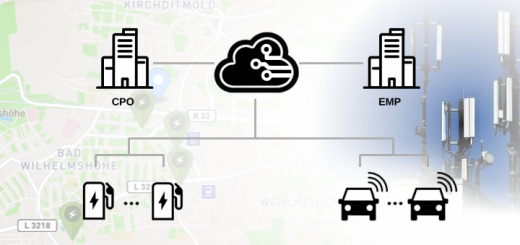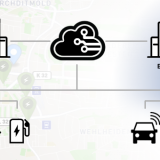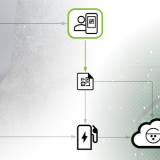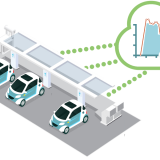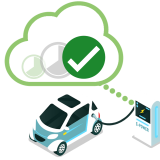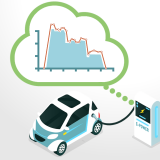
Energy management (EM) is a general term describing the distribution of Energy to several consumers. Since shortages of energy are almost unavoidable in this context, the term “Load Management” is often used as an alternative.
Energy management is particularly effective whenever the consumption can be controlled, which is certainly the case for a electric-mobility charging infrastructure: An electric train must not drive slower during cloudy weather. A production-line must not produce less units per hour. But car-batteries may be charged faster or slower depending on circumstances.
For this, both the terms “Smart Grid” and “Smart Charging” have been established. In that context, the following concepts are often used:
Static Load Management: Fixed setting for a charging station or a charge point. Usually in kW and/or Ampere per PhaseI
Integrated Load Management: A charging station with integrated load management can decide on it’s own how to distribute the available Energy. Such a charging station may have up to 16 charge points. It’s decision is constrained by certain preset values. The charging station will know input leads, the capacity of each charge point and also the power acceptance of the connected vehicles.
The charging station does not know about external electricity sources (prosumers), other charging stations or external consumers, the requirements of the users or even external systems (for example in the context of tour planning).
Dynamic Load Management: Usually this describes an additional control unit, i.e. additional software using edge- or cloud-computing. This control unit has more knowledge about the topology and the users than individual charging stations.
Do note though: The term “dynamic load management” does not have a precise definition.
Gridware discerns between EM with a constant maximum current and EM with a dynamic maximum current. Each is implemented as it’s own actor within the smart grid topology:
- “Charging Cluster” for constant maximum current
- “Charging Farm” for dynamic maximum current
Gridware enables operators to combine charging stations which are physically connected to a “Charging Cluster”. This is just like in the naming-conventions for “integrated load management”, in which producers use the term “Charging Cluster”.
We do separate these concepts. Among other reasons, the EM algorithms must have a rather different functionality – especially in topologies where the dynamic maximum current can drop so low that the base load cannot be guaranteed any more – which has significant implications for the offline-capability of the charging infrastructure.

